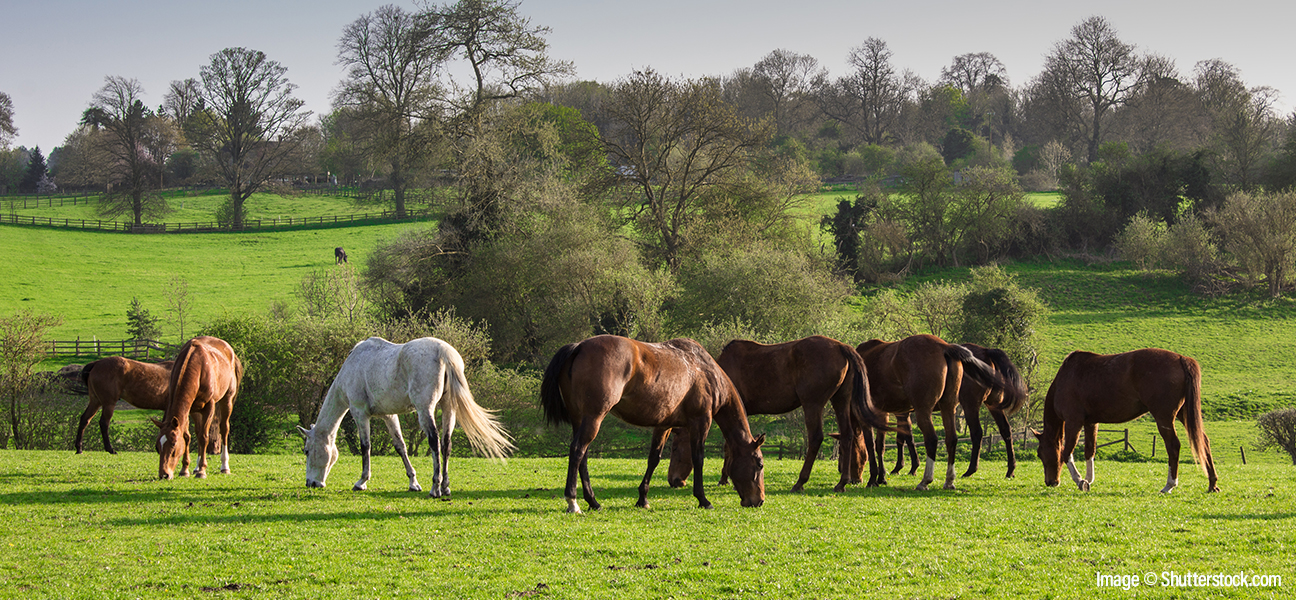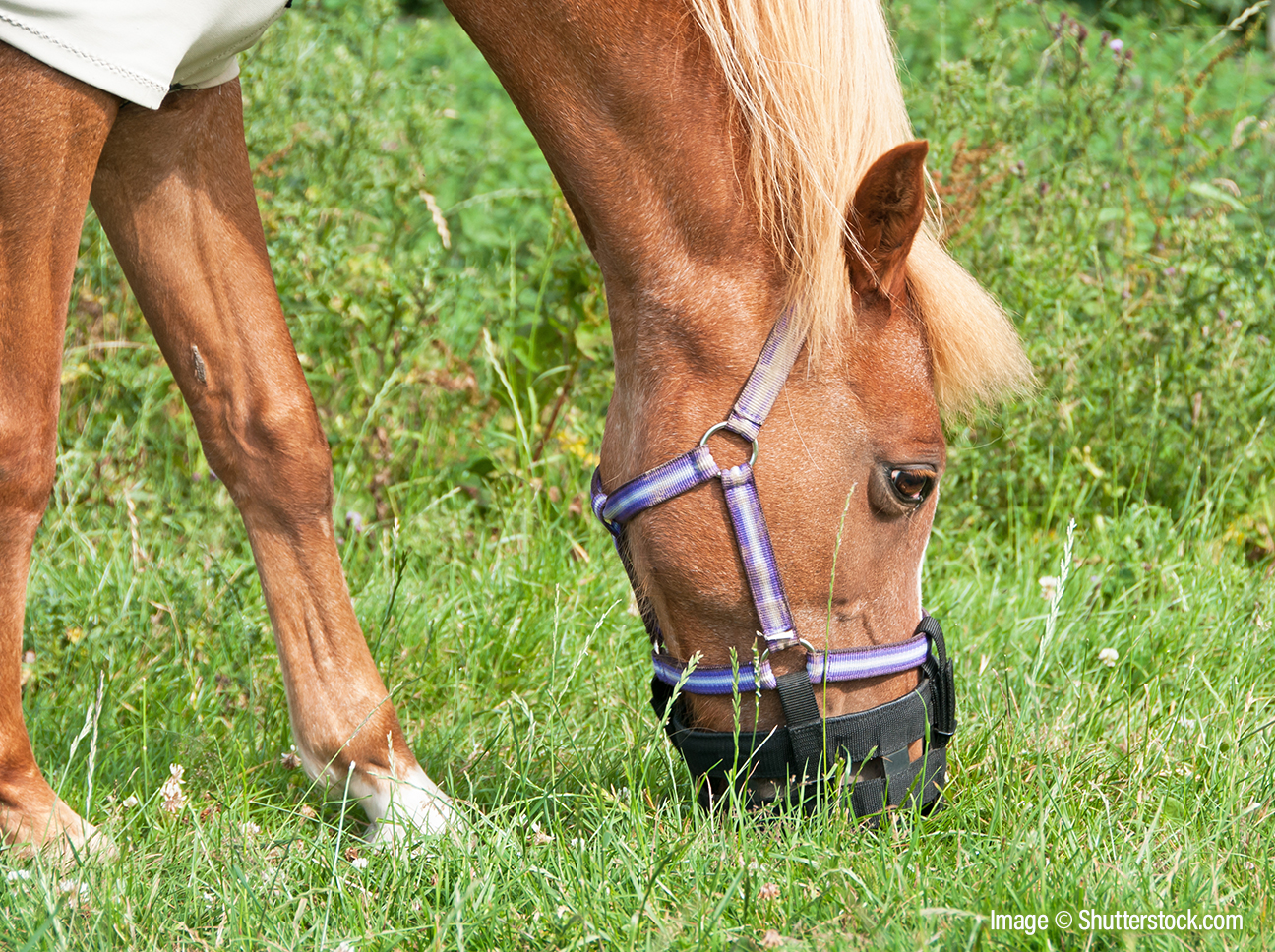Grazing muzzles can be a very useful tool to help diet horses, particularly if reducing turn-out time is not an option or is already minimal. It is important, however, to remember that they will alter both a horse’s eating and social behaviour.
Grazing muzzles should be used with care, should be properly fitted and horses and ponies should be adapted gradually to wearing them. Group and individual behaviour should be monitored closely to observe any potential concerns caused by altering the herd dynamic.
Fit of the Muzzle
With so many different muzzles available to buy, it is vital that an owner is aware of how the style of the muzzle may affect its fit on their horse.
A muzzle must be tight enough to stay on, but not so tight that it rubs.
- Measure the length of the grazing muzzle against the side of the horse’s head
- There should be a one inch gap between the horse’s mouth and the base of the muzzle
- You should be able to fit two fingers underneath the noseband of the grazing muzzle
- The horse must be able to open its mouth comfortably without any restriction
- Ensure that all straps are not rubbing or creating pressure points
Owners may find that brighter horses (in particular little ponies) may find ways to remove a well fitted muzzle, so sometimes it is necessary to be slightly resourceful- I have found that plaiting the strap into the forelock certainly helps.
 High grazing density.
High grazing density.
Introducing the Muzzle
It’s important to introduce the muzzle slowly and positively, so that your horse does not resent the process, or panic that he cannot eat or drink.
Once the horse is happy with the muzzle around his head and face, introduce the muzzle to his nose, and only once happy, secure it fully. It is then advisable to hand graze your horse in the muzzle and encourage eating and drinking. Remember to only keep it on for short periods to start with, as otherwise you may struggle to get it on in the future.
A horse should never wear a muzzle for 24 hours a day, the maximum recommended time period is 10 hours a day.
Current Evidence (2016) for Muzzle Success
New research conducted by the WALTHUM Equine Studies Group in association with Dr Annette Longland, has highlighted that both the season and grass length influence how well a grazing muzzle will work.
When wearing a grazing muzzle intake was reduced by 77% in spring and summer, and by 83% in autumn. It was also found that shorter, upright grass (10cm or less in length) was easier to eat when compared with longer grass. Long grass can become frustrating as it flattens as the horse tries to eat it, making it impossible to pick up. However, very short grass can also cause problems, having been shown to cause dental issues, in particular the blunting of incisors, partially due to pressing against the muzzle and partly because it leads to dirt and sand being picked up causing additional wear. Further evidence has also shown that a horse wearing a grazing muzzle will move around and forage more, therefore further aiding weight loss.
It should however be noted that in another paper, it was shown that on average, a horse wearing grazing muzzle for a 1/3 of a day, and then was allowed unlimited grazing the rest of the day, would actually eat more overall than a horse with no muzzle! It is therefore vital for the grazing muzzle to feature as part of a controlled diet, not as the only form of calorie restriction.
Conclusion
Grazing muzzles are a valuable asset to anyone who is struggling to help their horse lose weight. Owners should be mindful in the way the muzzle is introduced, and should not rely on it as a sole-source of diet restriction.
If the aim is to lose weight, then you should make sure you are feeding accordingly, and are using a tool to help you monitor progress; weight tapes and body condition scoring are helpful for all owners to be clued up on.
Deben Valley Equine Veterinary Clinic have recently formed a “Portly Pony Club” which hopes to bring together owners who are dieting their ponies, for some friendly companionship, and to share tips and success stories. If this is something you’d be interested in joining, please contact the office.
